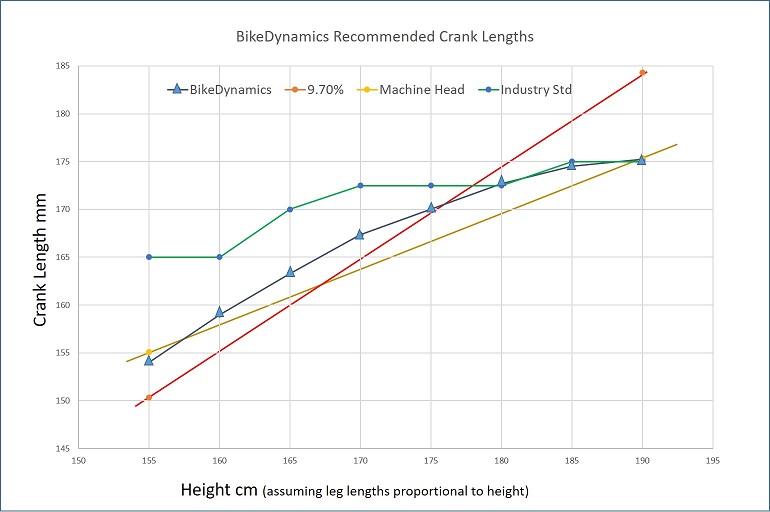xtinctionRebeller
10 W
- Joined
- Mar 17, 2020
- Messages
- 82
The stock crank arms for the Tongsheng TSDZ2 have flawed geometry in 3 respects:
The first correction needed is to use a zero offset crank on the right-hand side. This reduces the Q-factor & simultaneously compensates for the right shifted center. According to Tony, the offset on the right is 100mm and the left is 70mm when the cranks are symetric and 170mm long. Since straightening the the right crank is claimed to correct both the centering and the overall Q-factor, then 30mm is the extra offset needed on the left (10 degrees).
A problem remains: if there is zero angle on the right crank arm, and the left crank arm has the same length as the right (170mm) but it's angled (thus asymetric), then the left crank arm's lowest position will be higher than the right crank arm's lowest position. Time for a picture:
So if we do a bit of trig, the left crank arm is the hypotenus of a right triangle. To match the up and down displacement, the length of the left arm actually needs to be 172.6mm. But note that most people don't want 170mm cranks anyway, so if we make the final correction and swap in a 152mm zero offset crank on the right, then the left crank needs to be 154.3mm {152mm / cos(10 degrees)}. The closest match to market choices is 155mm.
Is my math correct? Are my inputs correct?
I realize that the body adjusts amazingly well, and that riders don't even notice a significant problem with the factory cranks, but if someone is going to do custom mods anyway they might as well get it as close to perfect as there are available parts for.
I would appreciate it if someone could revew these numbers, so I don't end up creating more awkwardness than I'm starting with.
- The Q-factor is unusually large ~210-270mm, depending on who you ask and depending on the bottom bracket width.
- The offsets are asymetric due to the reduction gear, which puts the midpoint of the pedals to the right of the bike frame. This shift is ~18-30mm to the right (depending on who you ask)
- The length of 170mm is generally only suitable for non-e-bikes with tall on-road riders. The crank should be a shorter length for on-road riders shorter than 5'9", even shorter for off-road riders (who need clearance), and the motor makes the leverage of 170mm less important (and I'm not sure the leverage makes any difference at all on a geared bike in the first place anyway -- i.e. just as we know that increasing wheel size does not increase efficiency as gears render it moot). The stock size is therefore only optimum for a small minority of riders.
The first correction needed is to use a zero offset crank on the right-hand side. This reduces the Q-factor & simultaneously compensates for the right shifted center. According to Tony, the offset on the right is 100mm and the left is 70mm when the cranks are symetric and 170mm long. Since straightening the the right crank is claimed to correct both the centering and the overall Q-factor, then 30mm is the extra offset needed on the left (10 degrees).
A problem remains: if there is zero angle on the right crank arm, and the left crank arm has the same length as the right (170mm) but it's angled (thus asymetric), then the left crank arm's lowest position will be higher than the right crank arm's lowest position. Time for a picture:
Code:
/ |
/ |
/ |
left crank arm => / | <= right crank arm
^
frame centerSo if we do a bit of trig, the left crank arm is the hypotenus of a right triangle. To match the up and down displacement, the length of the left arm actually needs to be 172.6mm. But note that most people don't want 170mm cranks anyway, so if we make the final correction and swap in a 152mm zero offset crank on the right, then the left crank needs to be 154.3mm {152mm / cos(10 degrees)}. The closest match to market choices is 155mm.
Is my math correct? Are my inputs correct?
I realize that the body adjusts amazingly well, and that riders don't even notice a significant problem with the factory cranks, but if someone is going to do custom mods anyway they might as well get it as close to perfect as there are available parts for.
I would appreciate it if someone could revew these numbers, so I don't end up creating more awkwardness than I'm starting with.


